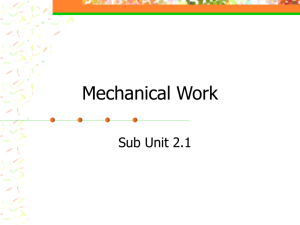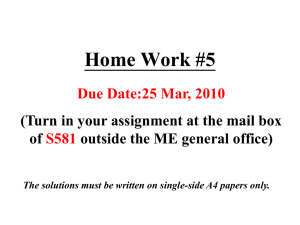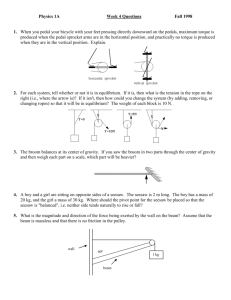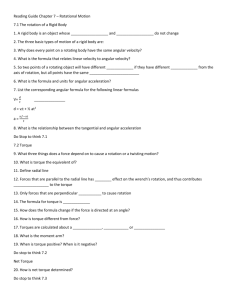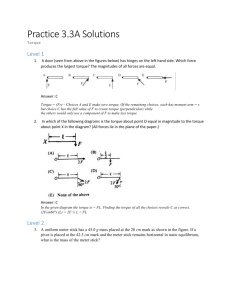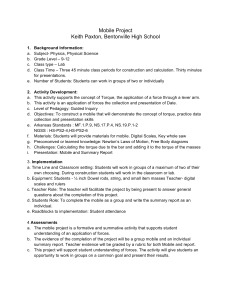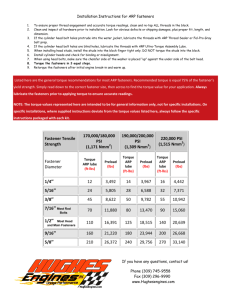STATICS physics www.freelance-teacher.com how to solve statics
advertisement
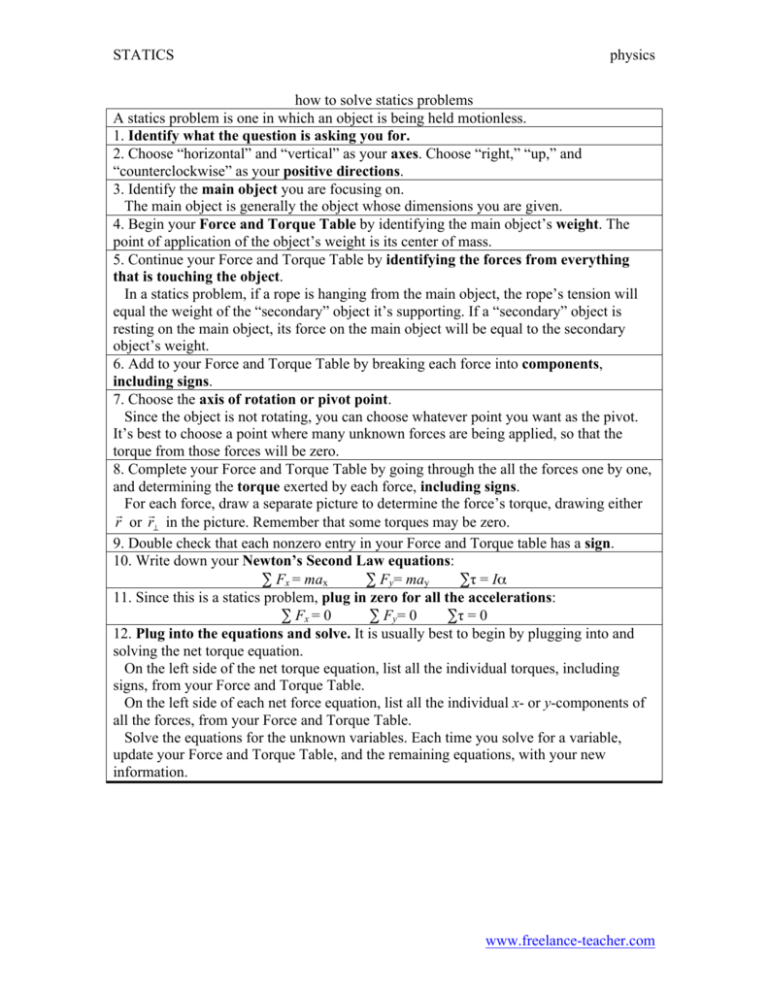
STATICS physics how to solve statics problems A statics problem is one in which an object is being held motionless. 1. Identify what the question is asking you for. 2. Choose “horizontal” and “vertical” as your axes. Choose “right,” “up,” and “counterclockwise” as your positive directions. 3. Identify the main object you are focusing on. The main object is generally the object whose dimensions you are given. 4. Begin your Force and Torque Table by identifying the main object’s weight. The point of application of the object’s weight is its center of mass. 5. Continue your Force and Torque Table by identifying the forces from everything that is touching the object. In a statics problem, if a rope is hanging from the main object, the rope’s tension will equal the weight of the “secondary” object it’s supporting. If a “secondary” object is resting on the main object, its force on the main object will be equal to the secondary object’s weight. 6. Add to your Force and Torque Table by breaking each force into components, including signs. 7. Choose the axis of rotation or pivot point. Since the object is not rotating, you can choose whatever point you want as the pivot. It’s best to choose a point where many unknown forces are being applied, so that the torque from those forces will be zero. 8. Complete your Force and Torque Table by going through the all the forces one by one, and determining the torque exerted by each force, including signs. For each force, draw a separate picture to determine the force’s torque, drawing either r or r⊥ in the picture. Remember that some torques may be zero. 9. Double check that each nonzero entry in your Force and Torque table has a sign. 10. Write down your Newton’s Second Law equations: ∑ Fx = max ∑ Fy= may ∑τ = Iα 11. Since this is a statics problem, plug in zero for all the accelerations: ∑ Fx = 0 ∑ Fy= 0 ∑τ = 0 12. Plug into the equations and solve. It is usually best to begin by plugging into and solving the net torque equation. On the left side of the net torque equation, list all the individual torques, including signs, from your Force and Torque Table. On the left side of each net force equation, list all the individual x- or y-components of all the forces, from your Force and Torque Table. Solve the equations for the unknown variables. Each time you solve for a variable, update your Force and Torque Table, and the remaining equations, with your new information. www.freelance-teacher.com



